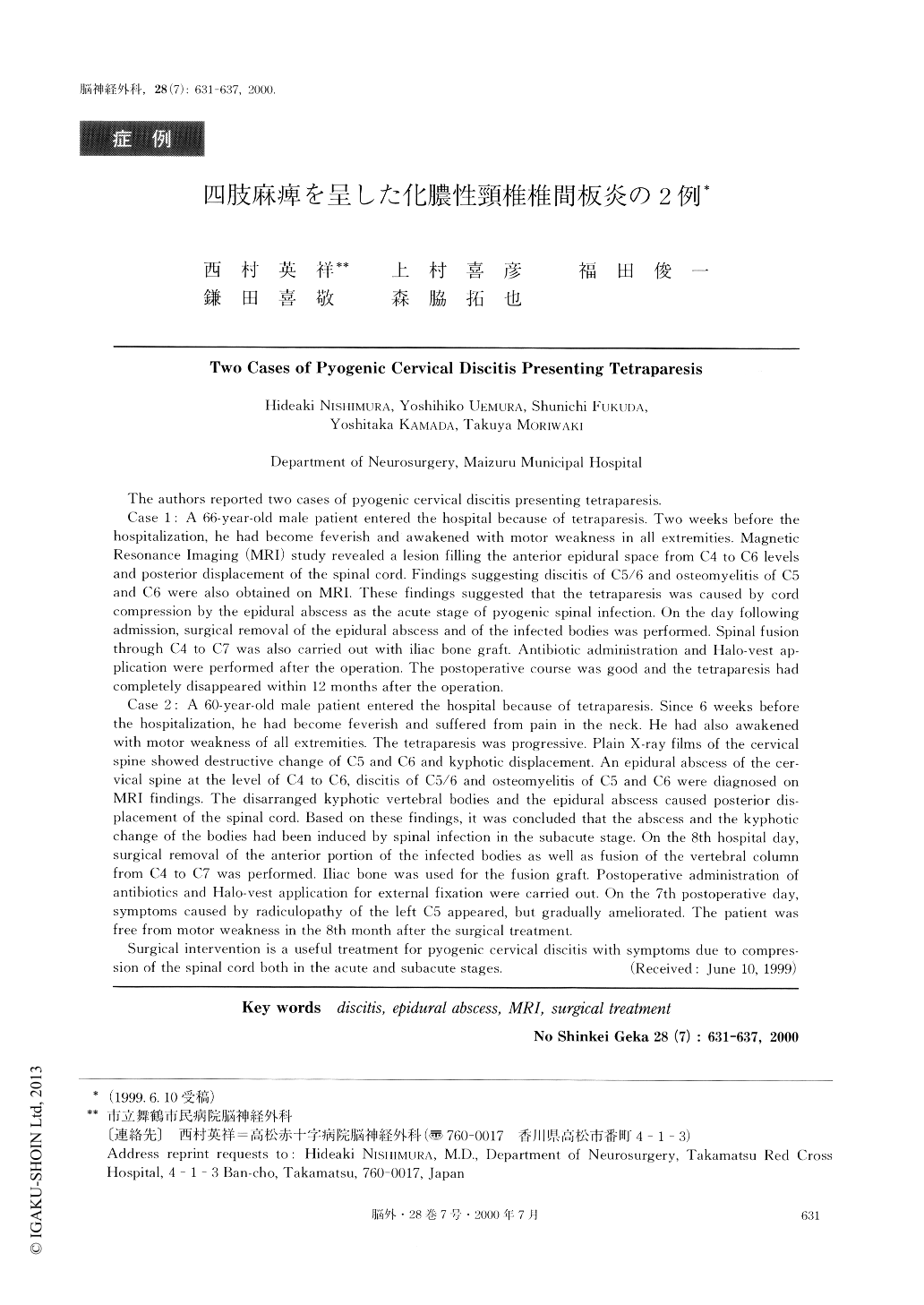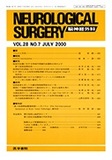Japanese
English
- 有料閲覧
- Abstract 文献概要
- 1ページ目 Look Inside
I.はじめに
化膿性脊椎炎の診断は画像的にはMRIの出現により容易となっているが,臨床的には合併症の兼ね合いなど複雑な臨床経過をとる場合も多い.今回われわれは頸椎椎間板炎をきっかけに急性期に硬膜外膿瘍により四肢麻痺を呈した例,亜急性期に椎体の後彎変形により四肢麻癖を呈した例に対して,ともに手術治療を行い良好な結果を得た.文献的考察を交えて報告する.
The authors reported two cases of pyogenic cervical discitis presenting tetraparesis.
Case 1: A 66-year-old male patient entered the hospital because of tetraparesis. Two weeks before the hospitalization, he had become feverish and awakened with motor weakness in all extremities. Magnetic Resonance Imaging (MRI) study revealed a lesion filling the anterior epidural space from C4 to C6 levels and posterior displacement of the spinal cord. Findings suggesting discitis of C5/6 and osteomyelitis of C5 and C6 were also obtained on MRI. These findings suggested that the tetraparesis was caused by cord compression by the epidural abscess as the acute stage of pyogenic spinal infection. On the day following admission, surgical removal of the epidural abscess and of the infected bodies was performed. Spinal fusion through C4 to C7 was also carried out with iliac bone graft. Antibiotic administration and Halo-vest ap-plication were performed after the operation. The postoperative course was good and the tetraparesis had completely disappeared within 12 months after the operation.
Case 2: A 60-year-old male patient entered the hospital because of tetraparesis. Since 6 weeks before the hospitalization, he had become feverish and suffered from pain in the neck. He had also awakened with motor weakness of all extremities. The tetraparesis was progressive. Plain X-ray films of the cervical spine showed destructive change of C5 and C6 and kyphotic displacement. An epidural abscess of the cer-vical spine at the level of C4 to C6, discitis of C5/6 and osteomyelitis of C5 and C6 were diagnosed on MRI findings. The disarranged kyphotic vertebral bodies and the epidural abscess caused posterior dis-placement of the spinal cord. Based on these findings, it was concluded that the abscess and the kyphotic change of the bodies had been induced by spinal infection in the subacute stage. On the 8th hospital day, surgical removal of the anterior portion of the infected bodies as well as fusion of the vertebral column from C4 to C7 was performed. Iliac bone was used for the fusion graft. Postoperative administration of antibiotics and Halo-vest application for external fixation were carried out. On the 7th postoperative day, symptoms caused by radiculopathy of the left C5 appeared, but gradually ameliorated. The patient was free from motor weakness in the 8th month after the surgical treatment.
Surgical intervention is a useful treatment for pyogenic cervical discitis with symptoms due to compres-sion of the spinal cord both in the acute and subacute stages.

Copyright © 2000, Igaku-Shoin Ltd. All rights reserved.


